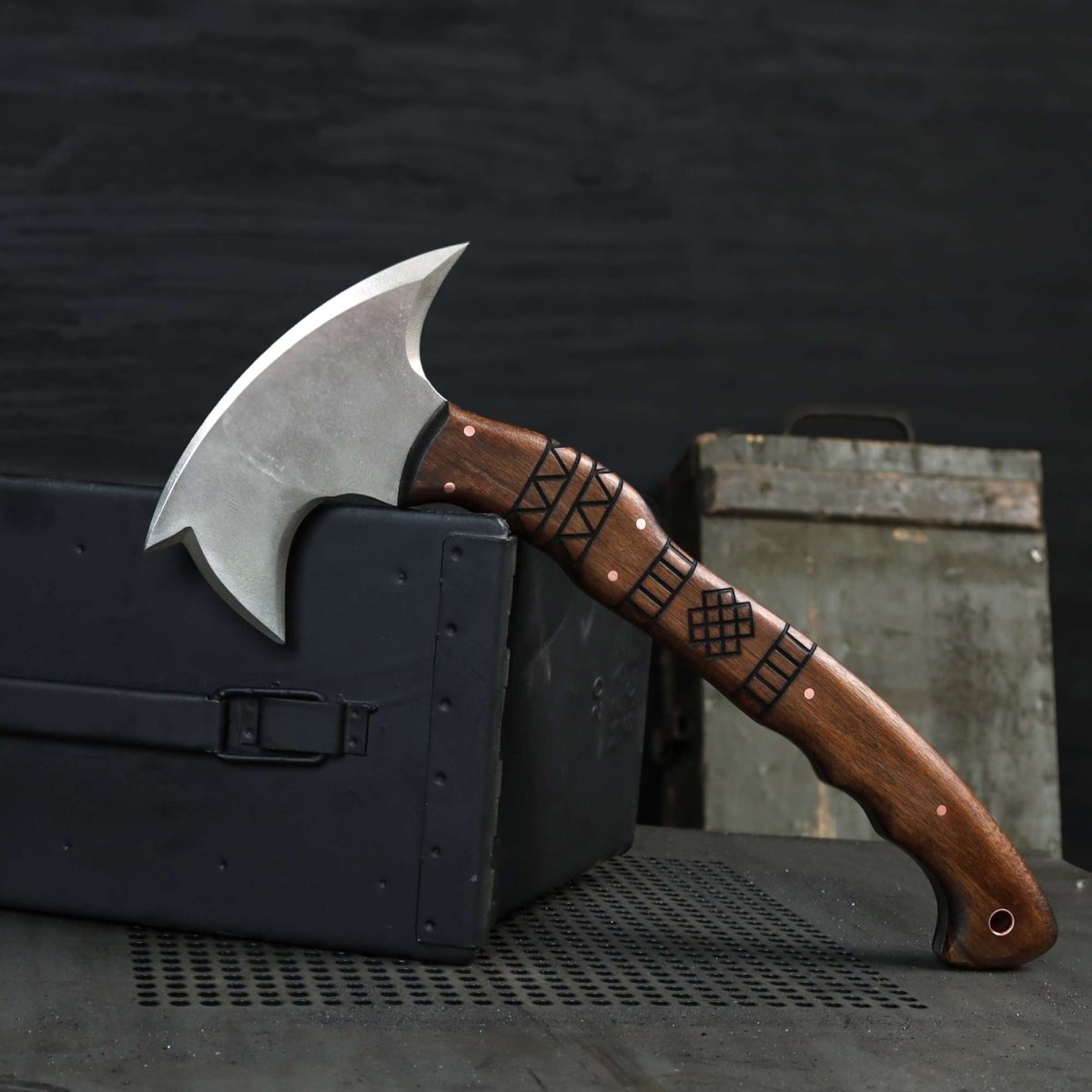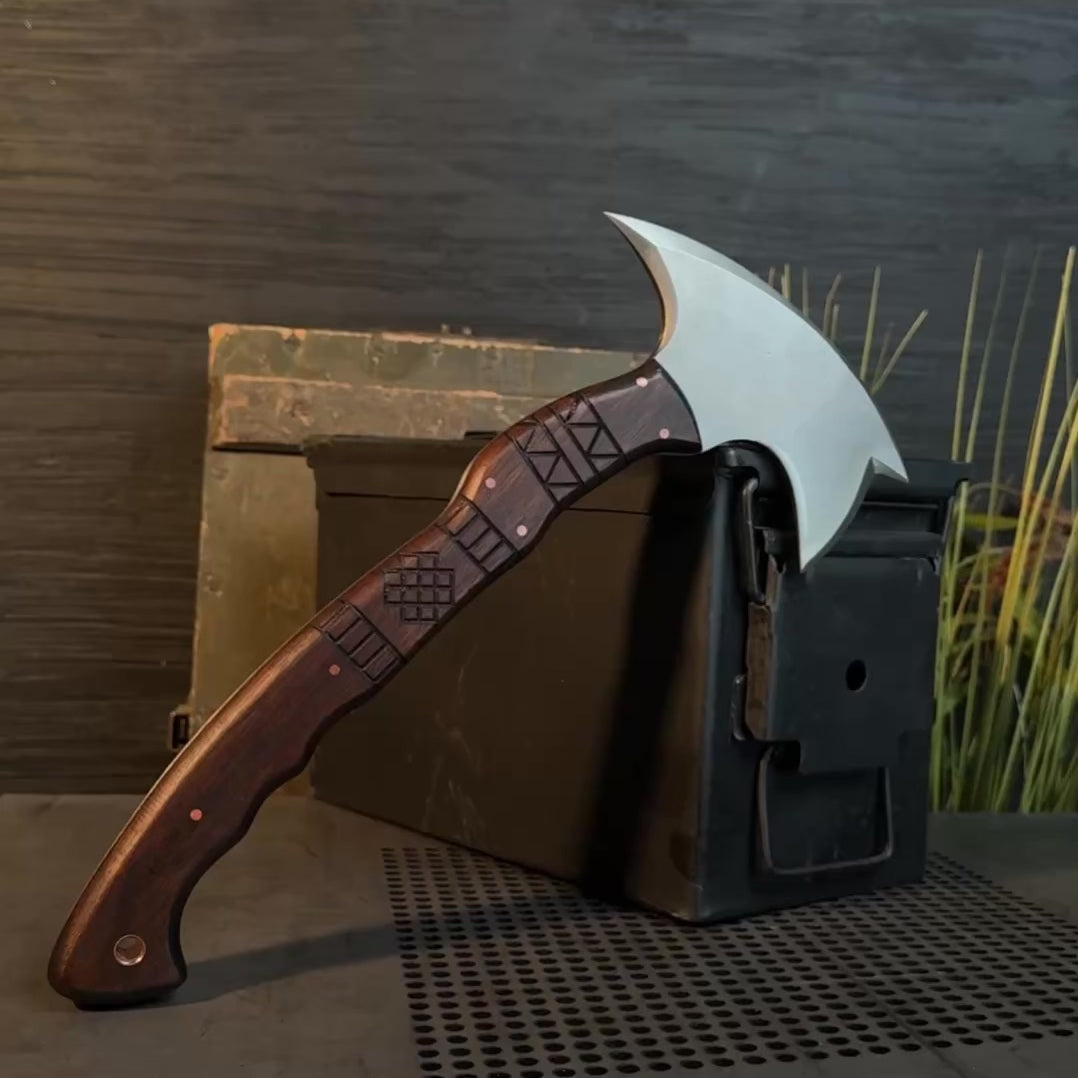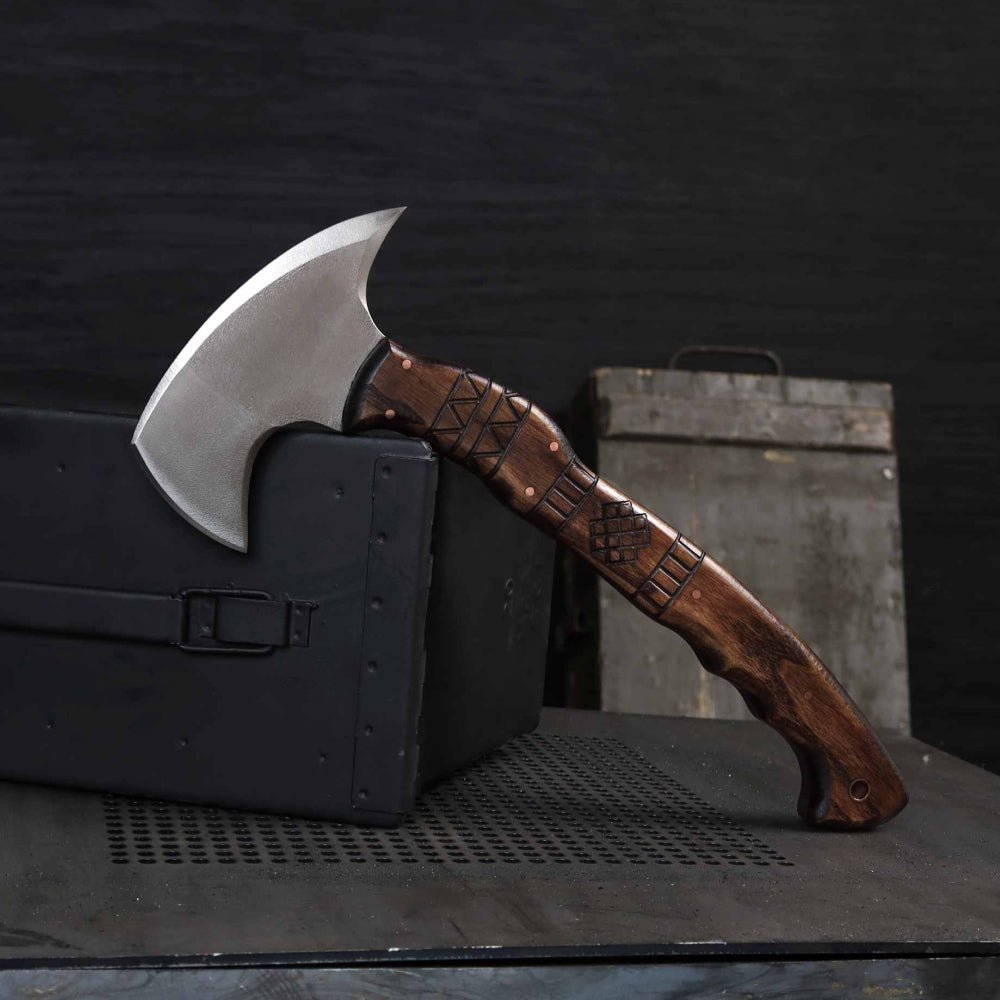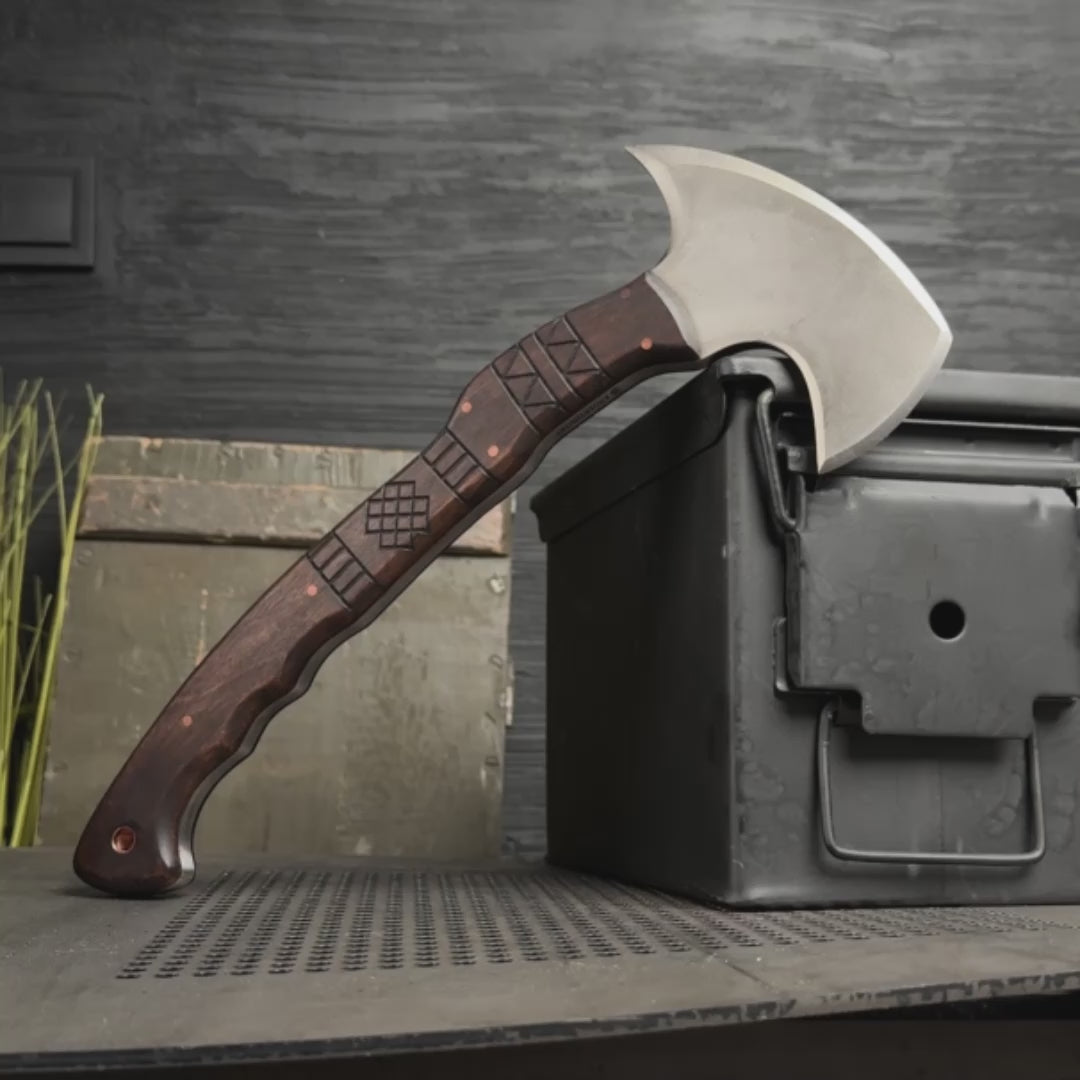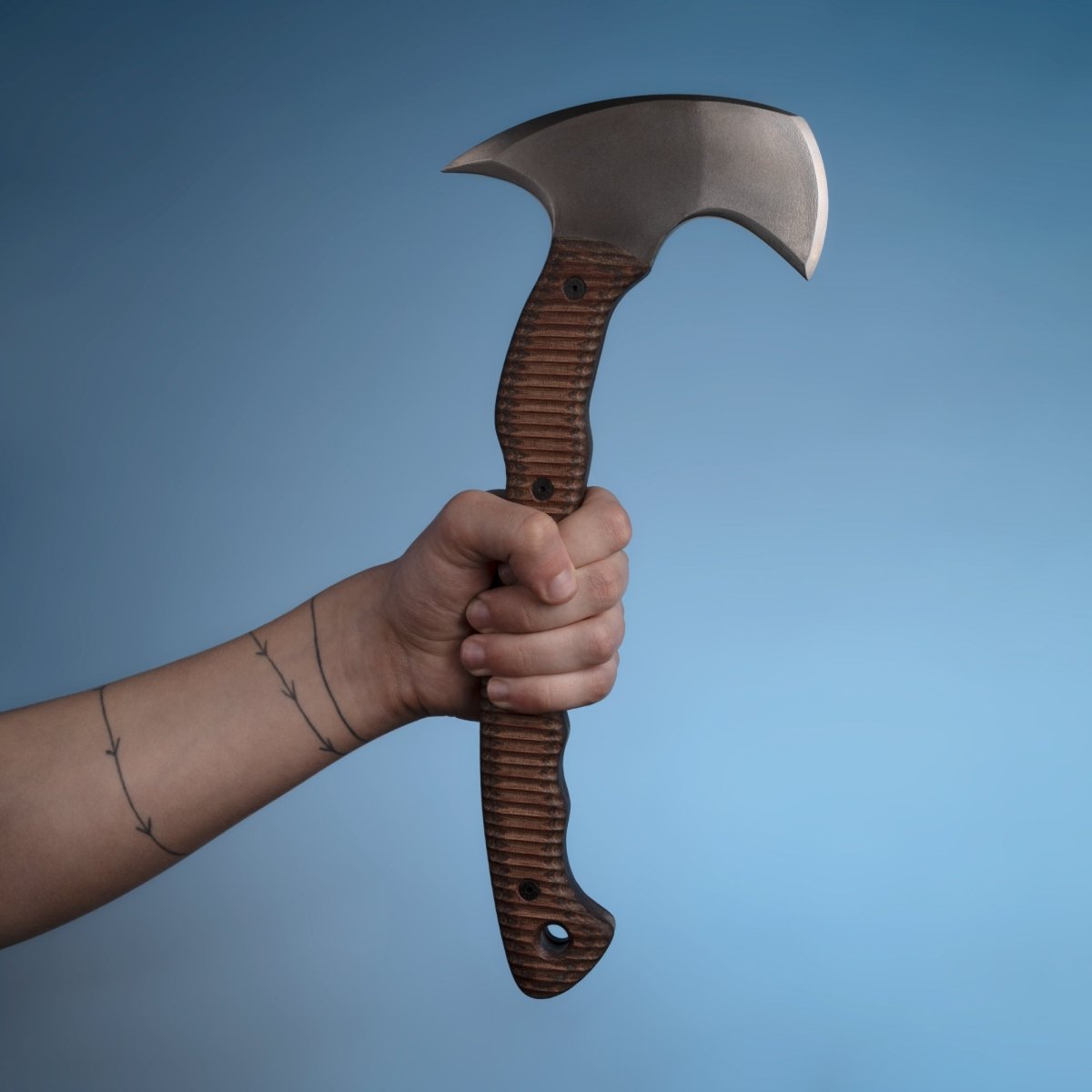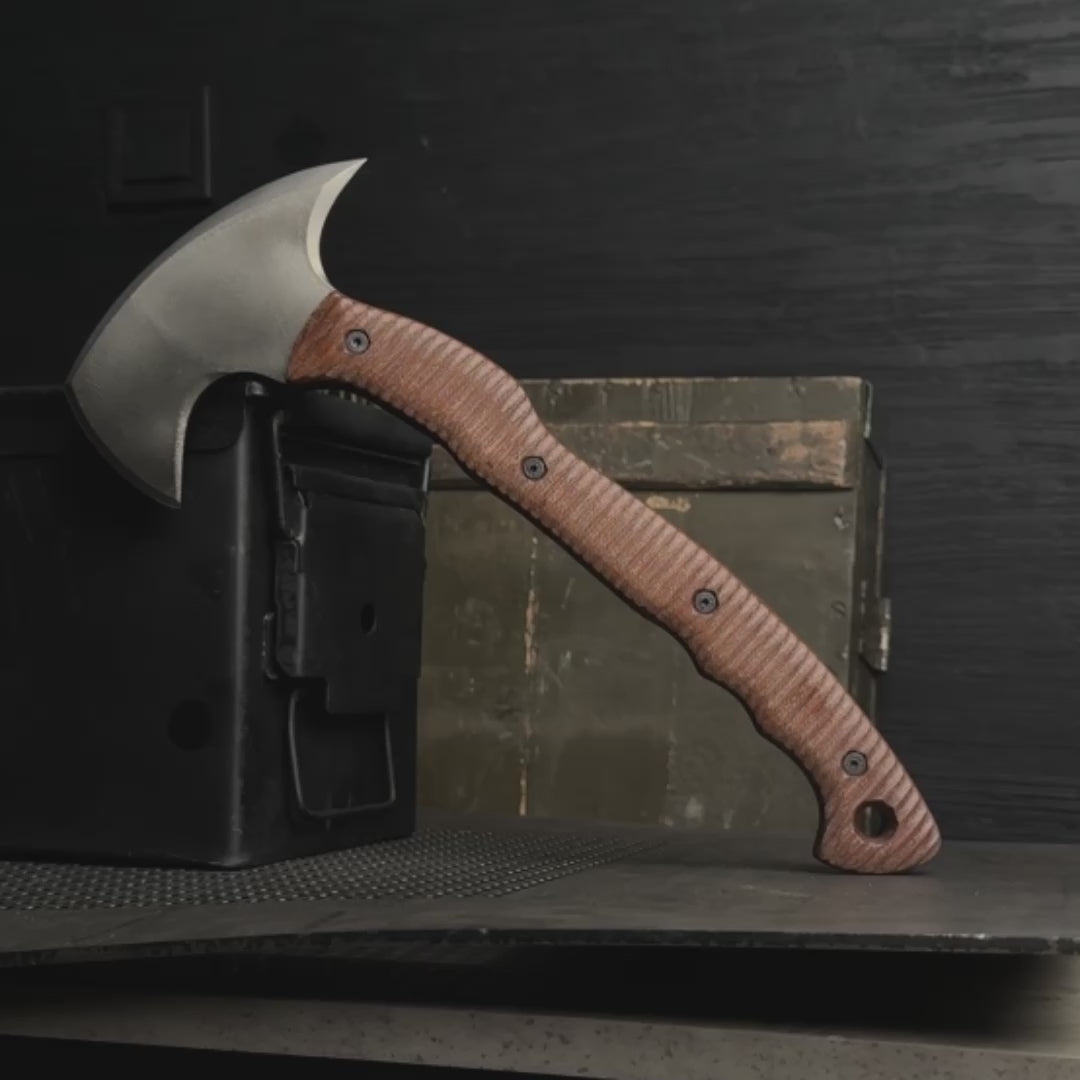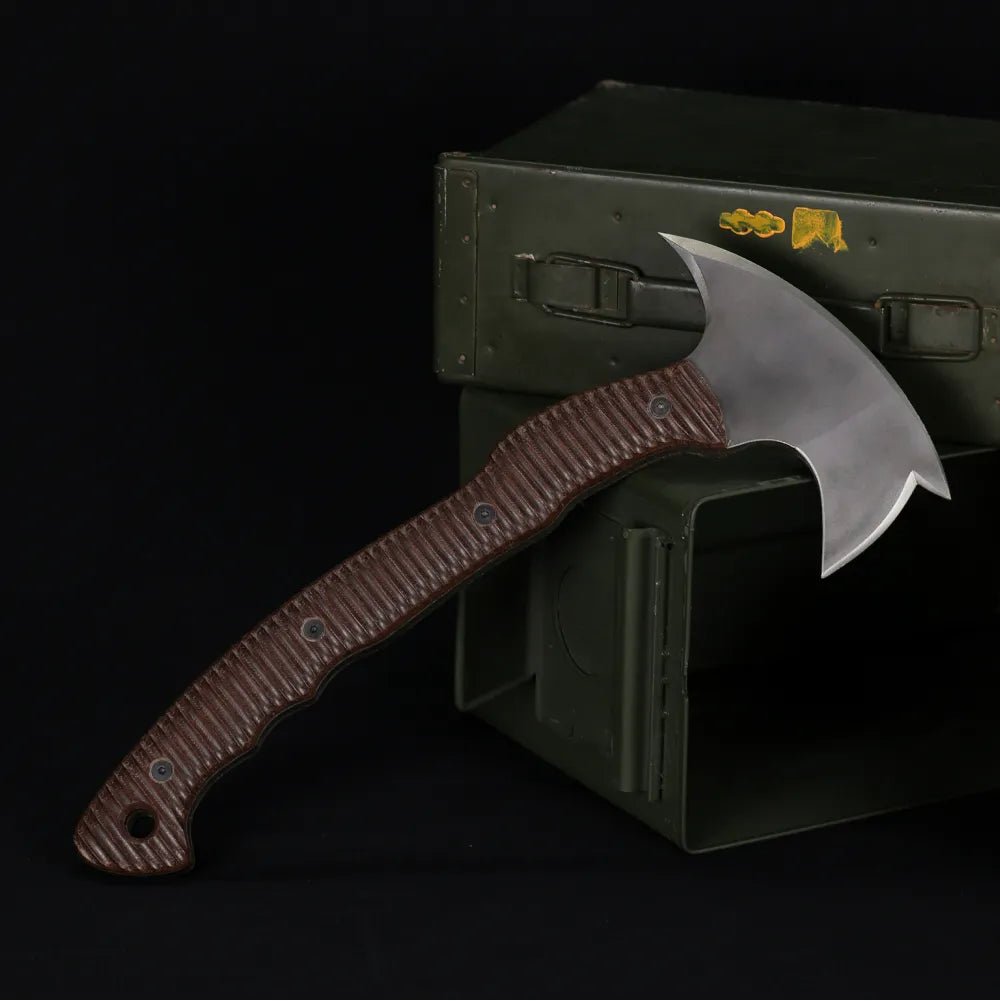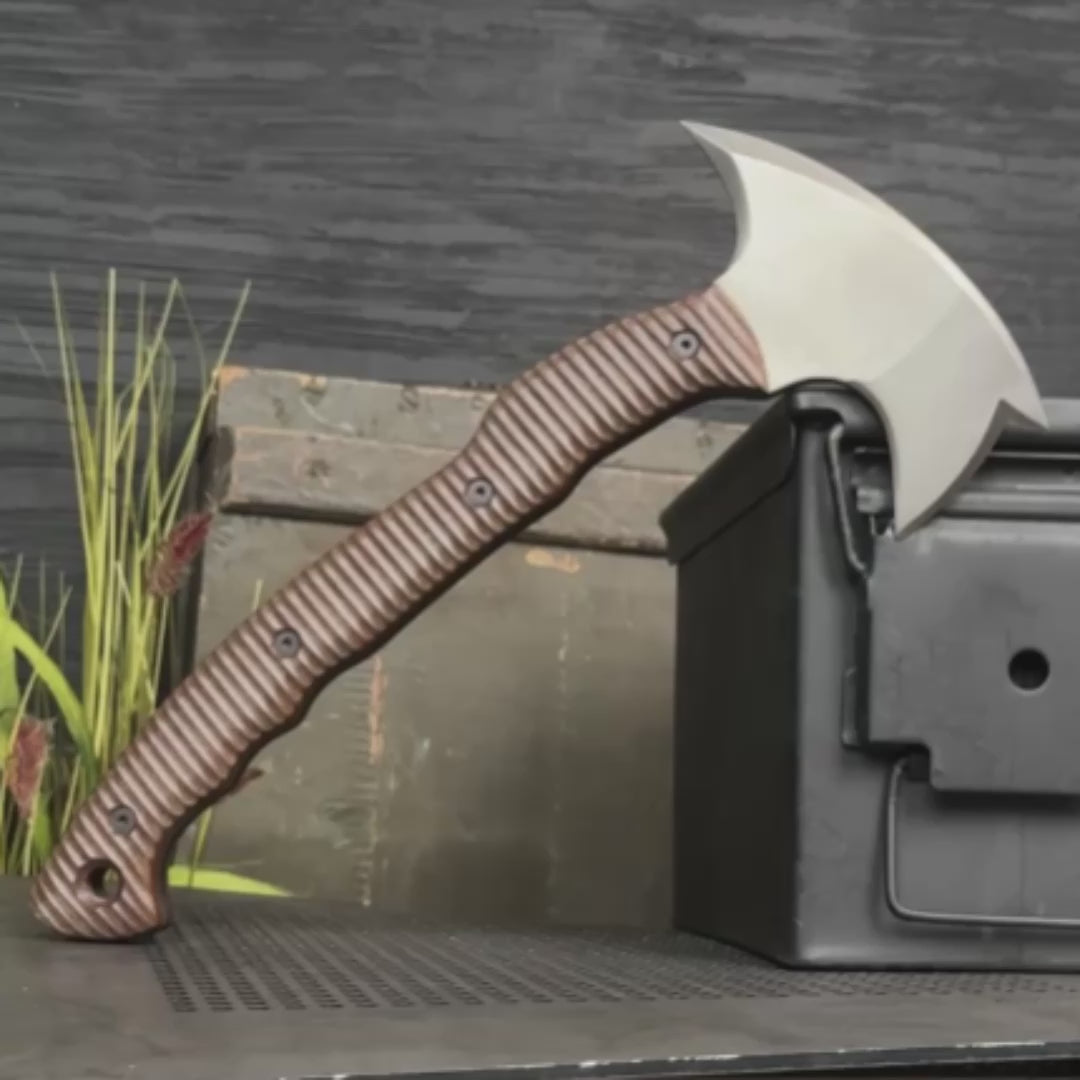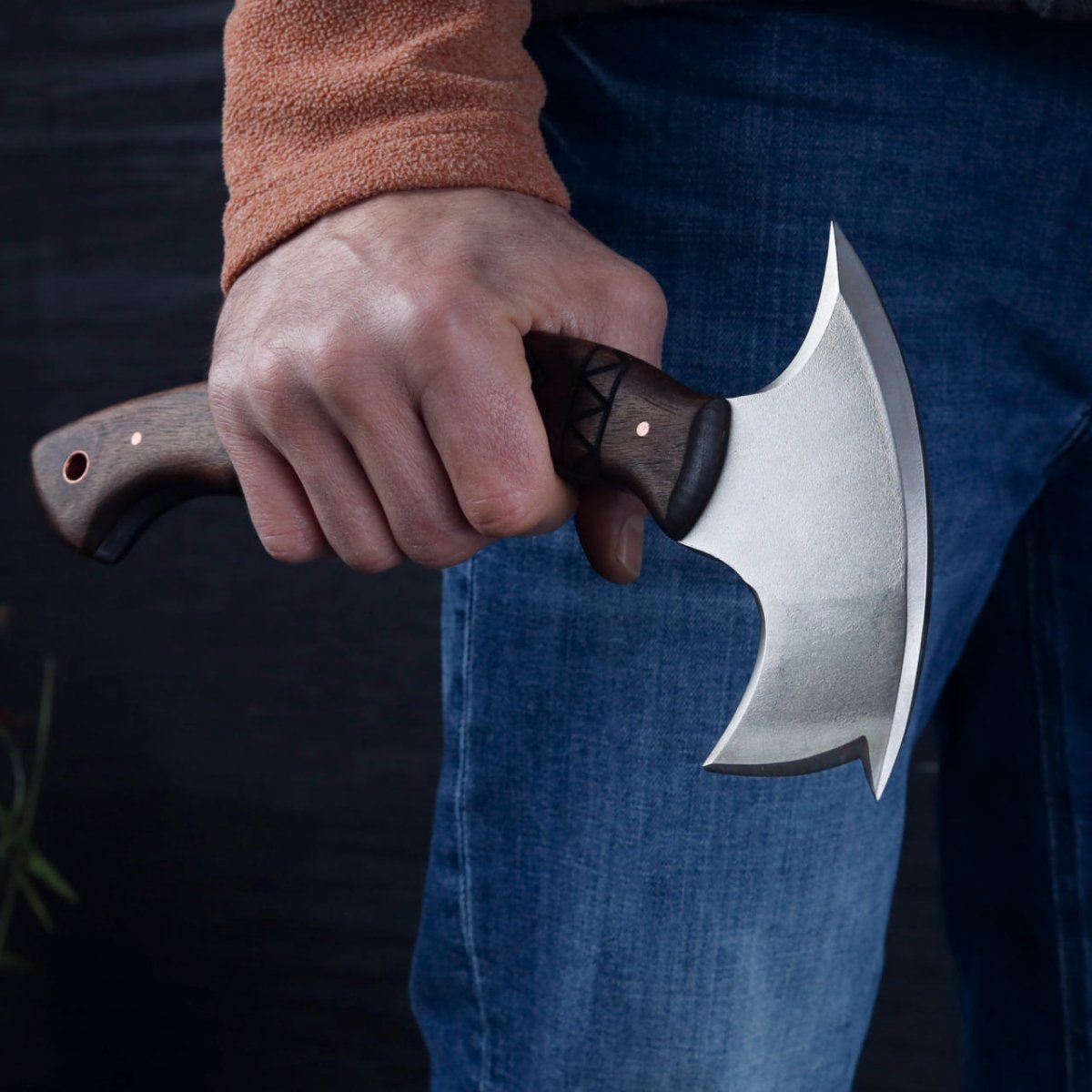
Tomahawks: From Tribal Weapon to Modern Tool
The tomahawk has a long and fascinating history rooted in Native American culture. Originally developed by tribes such as the Algonquians, Cherokee, and Iroquois, early tomahawks were made with sharpened stone or bone heads attached to wooden handles. They served as multipurpose tools for hunting, chopping, and self-defense, as well as important symbols of status and diplomacy — some were even ceremonially buried or given as peace offerings.
With the arrival of European settlers, Native tribes gained access to metal, and tomahawks began to feature steel blades, greatly increasing their durability and effectiveness. These hybrid weapons became a common part of Native American life and were even carried during conflicts such as the French and Indian War and the American Revolution.
In modern times, the tomahawk has evolved from a tribal weapon into a highly respected tactical tool. Used by U.S. military forces, especially in special operations units, modern tomahawks are valued for their versatility. Soldiers use them for breaching, close combat, and survival tasks in the field. Their lightweight design and practical functionality have made them a staple in military gear, survival kits, and bushcraft communities.
From ancient forests to modern battlefields, the tomahawk remains a powerful symbol of adaptability and strength — proof that a tool forged in tradition can still serve in today’s world.


